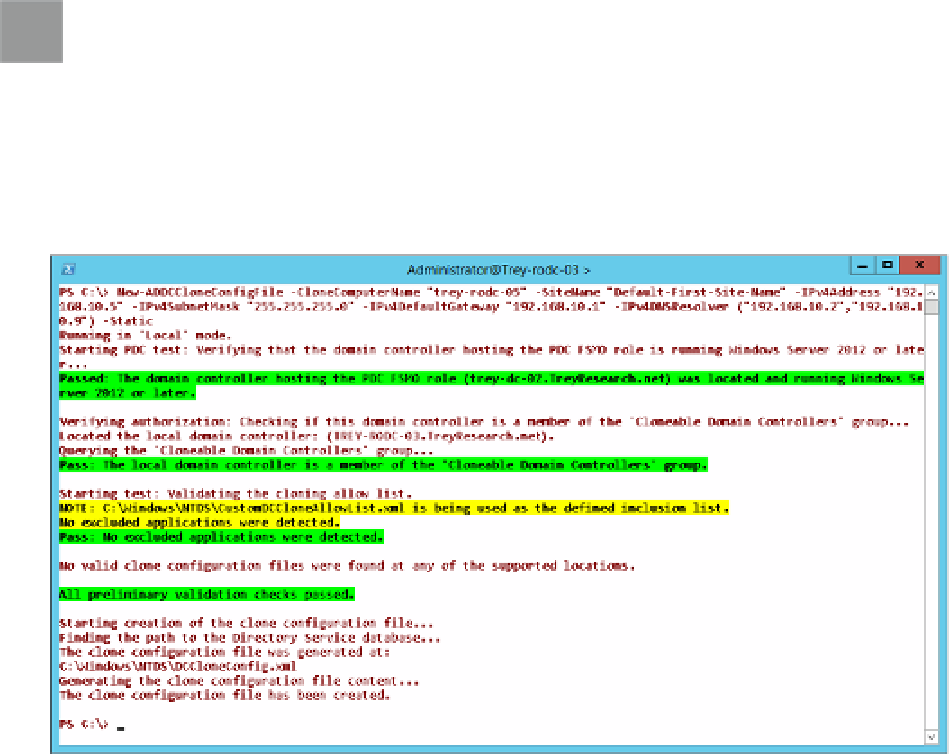Information Technology Reference
In-Depth Information
EXAM TIP
Domain controller cloning is a new feature that is likely to get solid coverage in the exam.
Make sure you know the file names and commands for the clone process; and which items
will definitely prevent a successful clone, such as DhCp.
The results of running New-ADDCCloneConfigFile on trey-rodc-03 are shown in Figure
5-14.
FIGURE 5-14
The results of the New-ADDCCloneConfigFile cmdlet
The final step to prepare the source computer for cloning is to gracefully shut it down.
You can use the GUI, the legacy shutdown.exe command, the Stop-Computer cmdlet, or the
Stop-VM cmdlet.
Creating the cloned domain controller
After the source domain controller is gracefully shut down, you can copy its VHDs by using
File Explorer, Xcopy.exe, or Robocopy.exe to the new location; or use Hyper-V export. Which-
ever method you use, you should remove any snapshots prior to cloning, and merge any dif-
ferencing disks prior to importing or creating the clone domain controller. After the files for
the cloned domain controller are copied, you can restart the source domain controller.
Create the new target virtual machine (VM) by using whatever method you prefer. For
single-disk VMs with a single network adapter, it's probably easiest to rename the copied
VHD and create a new VM that uses it.
Start the target cloned VM, and the cloning operation automatically completes (see Figure
5-15), based on the settings in the DCCloneConfig.xml file.















